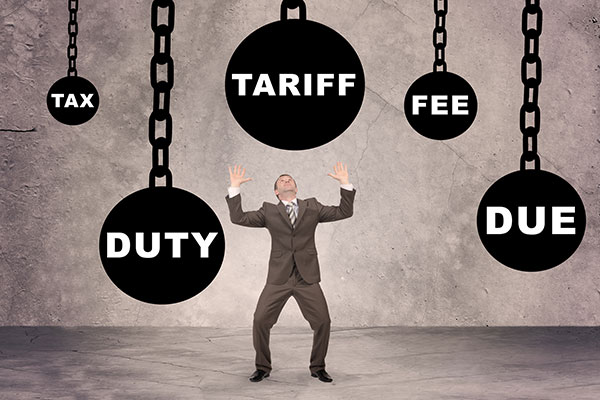As tariffs and trade policies shift around the world, manufacturers are rethinking how and where they build products. Mercury CEO Josh Medow says the key is planning early, diversifying suppliers, and creating supply chains flexible enough to adapt when trade rules change.
What’s Related
Supply Chain 24/7: Let’s start with the big picture. What’s behind the surge in new tariffs and how is that uncertainty changing how companies plan their supply chains?
Josh Medow: For years, we’ve seen regulatory and policy consistently change across healthcare logistics, everything from import permit requirements and “Know Your Customer” rules to changing classifications for materials.
Today, we’re experiencing governments using trade policy as a tool for national security and economic competition.
For supply chain leaders, that means uncertainty is the new normal, and companies need to consider “just-in-case” strategies, like diversifying suppliers, qualifying multiple manufacturing sites, and building resilience into their networks.
SC247: You’ve talked about “tariff resiliency” as a key factor in whether companies thrive or struggle. What does that mean exactly?
JM: In its simplest form, tariff resiliency ensures your supply chain can absorb or avoid shocks from the fluid trade policies we’re experiencing. Often, that means manufacturing products as close to where they’ll be sold or approved. Resilient companies either build production capacity within their primary markets or set up across multiple regions so that no single set of tariffs can derail their operations and margins.
We’re also seeing smart use of tools like free trade zones (FTZs) and temporary classifications that can minimize duties during development. When tariff structures or political priorities shift, those with diversified supply chains can adapt quickly and maintain profitability without disruption.

Josh Medow
SC247: Can you share a real-world example of a company that was caught off-guard by a tariff or policy change?
JM: We work with a large European medical device company that ships devices costing $200-300,000; tariffs in this case cost about 15%, resulting in a lot of additional costs.
When policies were preparing to change, they could have rushed shipments before the tariffs took effect, alleviating operational and cash-flow stress, or they could have started part of production in the U.S. This would have added additional flexibility for future policy changes, too.
SC247: Companies often go with the cheapest or simplest option when it comes to sourcing. Why can that be a problem in today’s trade climate?
JM: Cost- or convenience-based decisions can be risky in today’s environment because of the speed in which tariff and trade rules are changing. What seems like a low-cost option today can become a major expense tomorrow if a new tariff or regulatory requirement is imposed.
Beyond immediate costs, these decisions can lock a company into long-term supply chain exposure. For example, working with a manufacturer in a high-tariff region may initially save money, but can impact margins, market access, or the company’s future options. Flexibility and awareness of trade risks will always be key to maintaining resilience.
SC247: For companies that want to “tariff-proof” their supply chain, what are the first steps they should take?
JM: The first step to “tariff-proofing” a supply chain is early planning. Asking yourself where a product will ultimately be sold is step 1, then finding a manufacturer in that region is step 2. This will minimize exposure to tariffs and shipping complexity and save money over time.
Companies may also consider leveraging tools like free trade zones or temporary classifications to delay or reduce tariffs owed. This all helps build a supply chain that can adapt quickly.
SC247: How can supply chain leaders weigh short-term savings against long-term exposure when choosing suppliers or production locations?
“My advice is to start planning early. Waiting until tariffs or trade policies hit can leave you locked into high costs, operational bottlenecks, or supply chain disruptions that are difficult and expensive to fix. Early planning gives companies flexibility and makes you sustainable, while preserving long-term value.”
JM: In healthcare and life sciences, which we mostly focus on, weighing short-term savings against long-term exposure goes back to choosing the right manufacturing partners from the start.
Choosing a supplier or production location solely for cost efficiency can create hidden risks if tariffs increase, regulations change, or geopolitical shifts occur. Flexibility, proximity to key markets, and adaptability may cost a bit more upfront, but can help protect continuity and long-term stability down the line.
SC247: What role does technology such as trade management tools or scenario modeling play in identifying and reducing tariff risk?
JM: Technology can support trade management by tracking shipments or modeling broad scenarios, but I have yet to see a perfect example of it replacing human oversight.
Free trade zones, carnets, prototype exemptions, and changing regulations all require judgment and experience to handle it. The companies that manage tariff risk best will use tools to inform decisions while relying on human insight and experience to keep their supply chains resilient and responsive.
SC247: Finally, what advice would you give to executives who think they can afford to wait and see how trade policies play out instead of acting now?
JM: My advice is to start planning early. Waiting until tariffs or trade policies hit can leave you locked into high costs, operational bottlenecks, or supply chain disruptions that are difficult and expensive to fix. Early planning gives companies flexibility and makes you sustainable, while preserving long-term value.

